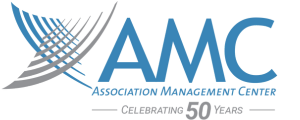
Ask the Management Team: What books have made a difference in your career?
600,000 to 1,000,000.
That’s how many business books are published each year in the U.S. alone, according to a recent Forbes article. How in the world do you know which ones are worth your time?
Queue AMC’s Management Team members, who took the time to share their favorite leadership and business books and articles. If you’re looking for career-impacting reads, you’re in the right place! AMC asked:
Which leadership book has made the biggest impact on you as a professional?
David Bergeson, PhD CAE, Executive Director of the Association of Pediatric Hematology/Oncology Nurses (APHON) and also Professional Records and Information Services Management International (PRISM)
I refer to Governance as Leadership by Barbara E. Taylor, Richard P. Chait, and William P. Ryan a lot.
I often thought one reason why boards of directors do not perform well is that the board isn’t clear about their role in the governance of the associations they serve. As a result, associations often repeatedly review and revise the job description for the board. The job description becomes long, and embedded in a potentially dreadful, well-worn conversation about roles and responsibilities. The issue is not one of lack of clarity. The issue is that the board cannot see how their work relates to the organization's mission. This makes it difficult for them to become engaged in and enjoy their work. In a word, they are bored.
Taylor, Chait, and Ryan argue very persuasively that the work of the board should be divided into three areas:
- Type I is the "fiduciary mode." In this mode, the board’s central purpose is the stewardship of tangible assets, and its principal role is to act as a sentinel. It oversees operations and ensures efficient and appropriate use of resources, legal compliance, and fiscal accountability.
- Type II is the "strategic mode." Here, the board’s central purpose is to ensure a winning strategy for the organization, and its principal role is to be a strategic partner to senior management. Its core work includes setting priorities, reviewing and modifying strategic plans, and monitoring performance against plans.
- Type III is the "generative mode." Generative thinking is a cognitive process for deciding what to pay attention to, what it means, and what to do about it. In the generative mode, the board’s central purpose is to be a source of leadership for the organization, and its principal role is as a "sense maker."
I find it really useful to view the work of the Board as consisting of these three components. I also find it important to make sure that time for each of these components is included on the Board agenda, particularly the generative mode, which is often neglected. If all we’re doing is presenting minutes, budgets and financial statements to our Board, and we don’t take a step back to look at the world around us and how we as an association fit into this world, then we need to be prepared for members of our Boards of Directors becoming detached, disengaged, and yes…bored.
Anne Cordes, MBA CAE
I’ve always been a huge fan of Peter Drucker, specifically Managing the Non-Profit Organization. He was one of the early gurus in the field of organizational management that emerged after World War II. And he was the first to point out that non-profit organizations were businesses, and needed to be run like businesses. Not only that, but he drew attention to what for-profit companies could learn from nonprofits. He raised the profile and the importance of our industry, and continues to be a source of inspiration for me as an association executive.
My favorite Drucker quote is, “Starting with the mission and its requirements may be the first lesson business can learn from successful nonprofits. … It alone can prevent the most common degenerative disease of organizations, especially large ones: splintering their always limited resources on things that are ‘interesting’ or look ‘profitable’ rather than concentrating them on a very small number of productive efforts."
Vish Kalambur, AMC’s Chief Information Officer
The book Crucial Conversations by Patterson, Grenny, McMillan and Switzler has changed the way I approach conversations in general and “difficult” ones in particular. With great revealing insight about human psychology, the book talks about the stories we tell ourselves based on past experiences. Choosing extremes of silence and violence we somehow seem to have lost the art of conversation. The book charts a path for striking a balance, being honest and truthful yet respectful in conversations. This book offers hope in a world consumed by conflict to have a dialogue for meaningful resolution. Great book for leaders, managers and just about anybody to help them have important conversations in their professional and personal lives.
Sue Farrell Stock, MPS, AMC’s Director of Catalyst Consulting
Start with Why by Simon Sinek is about how great leaders inspire everyone to take action by focusing on why the organization exists first, then considering the “what we do” or “how we do it”. For many websites, there is detailed description about events and content, which is important. There is information about joining, registering, certifying. There is often information about strategy, mission, vision and beliefs. The language used to describe mission and vision should directly address
“‘why”. Does yours?
The Daily Drucker by Peter F. Drucker is also a favorite of mine. Peter Drucker was a writer, professor, management consultant and social economist. His groundbreaking work transformed modern management into a discipline taught at most business schools and practiced at for profit and not-for-profit organizations worldwide. The Daily Drucker is a compilation of his insights. Drucker described the importance of organizing dissent into decision-making processes by inviting people with different points of view into the discussion. Raising the level of dialogue about a problem or opportunity is key to defining and executing it. While this can be viewed as a conflict approach to decision-making, the overall quality of the decision and subsequent actions can improve the effectiveness of an organization in achieving its mission.
Catherine Underwood, MBA CAE, Executive Director of the American Pain Society
There are actually two books that have made a profound impact in my professional life (and to a lesser but important extent, my personal life).
The first one is First, Break all the Rules by Marcus Buckingham and Curt Coffman. It examines research done to determine how great leaders lead and focuses on how the best managers select an employee for talent rather than skills or experience. They build on each person’s unique strengths rather than trying to fix weaknesses.
I first read this book about 15 years ago when it was recommended to me by a peer at AMC – touted as a common sense approach to finding the right people for the job and our company. This led me to all the rest of the books by this author and ultimately to Strengthsfinder which my team is working with right now. Powerful stuff!
The second one is The Four Disciplines of Execution by Chris McChesney, Sean Covey, and Jim Huling. I actually took my team to this session at the Franklin Covey learning center in Chicago before actually reading the book and it was exciting and energizing. I still use the principles of the importance of focus and putting the most important task first. It also has helped me to understand how to realistically measure goals and achieve outcomes by being selective when it comes to a variety of choices to make.
To learn more about the AMC Management Team, please visit the Our Experts section of our website.


